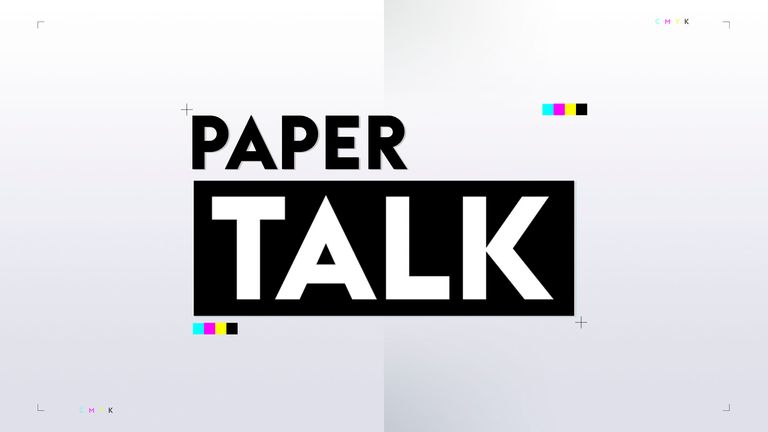Plus: Newcastle are currently free to sign big-name players, such as Portugal’s Ruben Neves, on loan from the Saudi Pro League; Phil Neville is closing in on becoming the new head coach of MLS side Portland Timbers; Jude Bellingham has topped the list for European shirt sales

All the top stories and transfer rumours from Saturday’s newspapers…
DAILY MAIL
Manchester United could lose staging rights for the Super League Grand Final to Manchester City due to the poor state of Old Trafford and uncertainty over the club’s plans for a rebuild.
Manchester United will slash overtime for ground staff, triggering accusations of ‘penny-pinching from those who need it most’.
Colombia’s president Gustavo Petro has said Liverpool forward Luis Diaz’s father’s kidnappers have not come good on their promise to release him and his situation is becoming ‘very dangerous’.
A group of Fiorentina fans have called for their Serie A match against Juventus on Sunday to be cancelled following the devastating storms that have devastated metropolitan of Florence.
- Transfer Centre LIVE!
- Stream the Premier League and more with NOW
- Get Sky Sports | Download the Sky Sports app
DAILY TELEGRAPH
Newcastle United midfielder Sandro Tonali is facing the prospect of an even longer ban from football after the Football Association also launched an investigation into his gambling addiction.
Newcastle United are currently free to sign big-name players, such as Portugal’s Ruben Neves, on loan from the Saudi Pro League.
Toto Wolff, the Mercedes F1 team principal and co-owner, says he is open to investing in Manchester United alongside Sir Jim Ratcliffe.
Emma Raducanu has acknowledged her “headspace” has been among the limiting factors affecting her performances since her stunning triumph at the 2021 US Open.
THE SUN
Erik Ten Hag has told Marcus Rashford it was “unacceptable” to go out partying straight after Sunday’s humiliating derby defeat.

Erik Ten Hag has branded Marcus Rashford’s behaviour as ‘unacceptable’, after being spotted out partying to celebrate his 26th birthday.
THE TIMES
Saracens are throwing their England contingent of Owen Farrell, Maro Itoje, Jamie George and Ben Earl back into action this weekend, only eight days after featuring in England’s World Cup bronze-medal match against Argentina.
Saudi Arabia’s plans to launch a multi-billion-pound T20 franchise league have been thwarted by new ICC regulations that would make it difficult to bring in enough big-name overseas players to the competition.
DAILY MIRROR

Image: Phil Neville has been sacked by Inter Miami after a run of 10 defeats from 15 in the MLS this season
Phil Neville is closing in on becoming the new head coach of MLS side Portland Timbers. The appointment will be the former Manchester United player’s first managerial role since being relieved of his duties as Inter Miami manager back in June.
Inter Miami CF are so pleased they have Ballon d’Or winner Lionel Messi in their squad that a friendly match will be held in honour of his latest achievement.
Abdoulaye Doucoure has been made the highest-paid player at Everton as a reward for his heroics over the past six months.

Image: Jude Bellingham celebrates after scoring Real Madrid’s winner against Barcelona
Jude Bellingham has topped the list for European shirt sales, with Manchester United’s Alejandro Garnacho making the top 10.
DAILY STAR
Liverpool reportedly believe they are in with a chance to land Paris Saint-Germain forward Kylian Mbappe, who is out of contract at the end of the season, this summer.
Neymar will pocket an incredible £100m without kicking a ball during his long injury layoff.
SCOTTISH SUN
Robert Snodgrass has revealed he used to wear Celtic gear under his Rangers training kit when he was a youngster.
Brendan Rodgers wants to keep David Turnbull at Celtic.
DAILY RECORD
Brendan Rodgers has extended a hand of peace to the renegade Green Brigade – but warned the controversial ultras not to rip the whole arm off.
Callum Davidson is claimed to be in talks over a return to management at Bristol Rovers.
Sourse: skysports.com